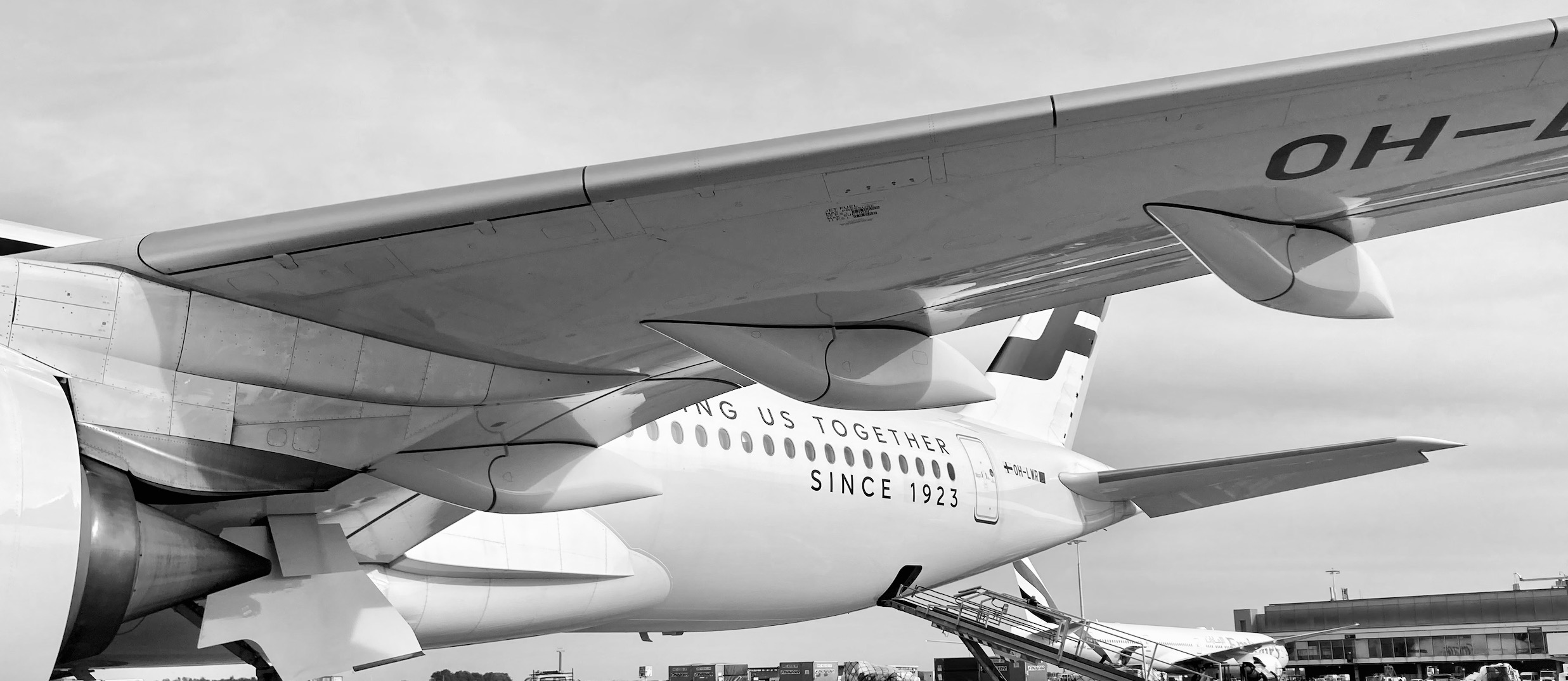Last time I was at Schiphol Airport, I was shooting rebels that clung to private jets, preventing them from taking off. How many passengers fit in a private jet? Twenty, ten, four, two in special cases maybe?
The plane I boarded yesterday was an Airbus 350, featuring 385 seats. An endless parade of bodies was entering the machine. In covid times Finnair scaled this flight back to 747’s, a man in a yellow jacket told me, only to step up its services as soon as it ended.
The romanticism of Antoine de Saint-Exupéry, who flew his own plane across the desert a century ago, is a far cry from flying this airbus, for which we are being processed as a commodity.
The calculator on Finnair’s site calculates that the roundtrip from Amsterdam to Osaka adds 1,07 ton CO₂ to my carbon footprint. Fifty trees must grow for one year to capture this CO₂. One could take the Thalys from Amsterdam to Paris for 72 times instead or drive a car in The Netherlands a half year long.
In the stomach of the airbus my eyes were soon glued to Dune, a movie in which aircrafts in the shape of mighty dragonflies cross the desert sands of planet Arrakis. The year is 10191. The human story goes on like ever before, Arrakis has been colonized by a tribe from another planet for the extraction of spices that are vital to interstellar travel.
The native people are called the fremen, for reasons that become slowly clear. They live underneath the dunes and possess great mental powers. Towards the end of the movie their leader makes a pivotal statement, far removed from the constellation colonizer-colonized.
The mystery of life is not a problem to be solved but a reality to be experienced.
Which off course doesn’t mean that they give up their desert planet to hungry ghosts.



No Comments